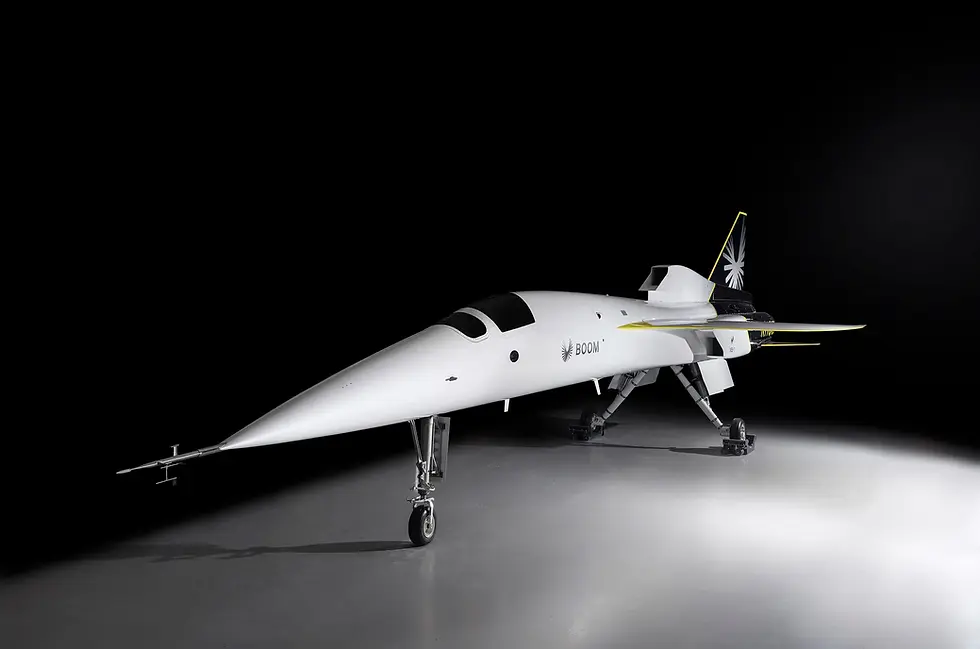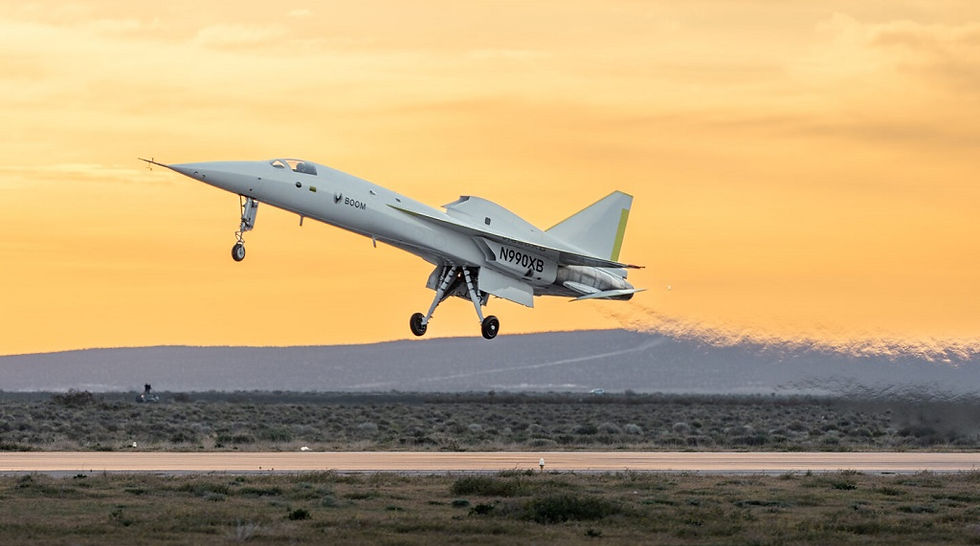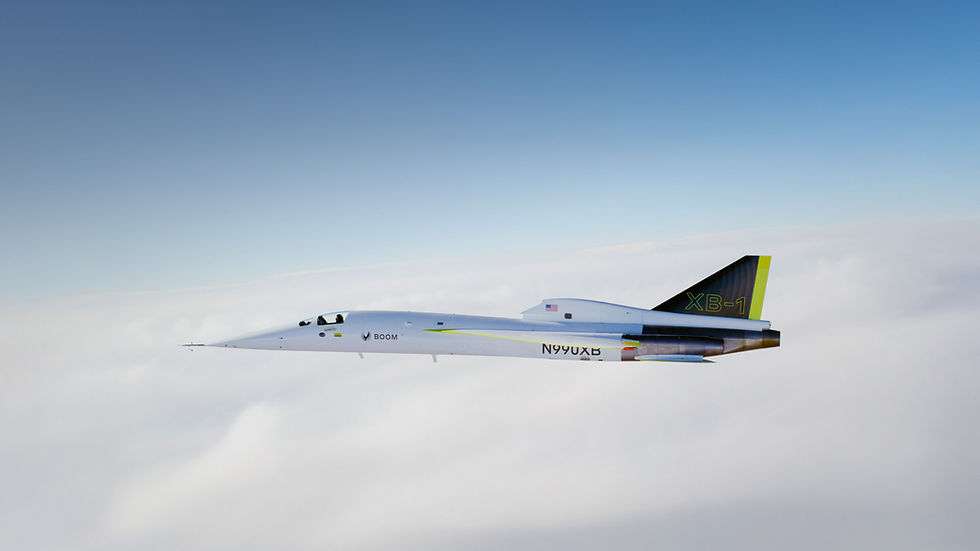Boom Supersonic’s XB-1 Breaks Sound Barrier in Supersonic Jet Test Flight
- Editor1
- Feb 3
- 2 min read

In a historic achievement for aviation, Boom Supersonic’s prototype jet, the XB-1, successfully completed a supersonic jet test flight, breaking the sound barrier and reaching speeds of Mach 1.1 over California’s Mojave Desert. This milestone marks a significant step forward in the revival of commercial supersonic travel, which has been dormant since the Concorde’s retirement in 2003.

The XB-1, known as the “baby boom,” is a one-third scale prototype of Boom’s upcoming commercial aircraft, the Overture, designed to transform long-haul travel. With the goal of carrying 64–80 passengers at speeds up to Mach 1.7, the Overture aims to reduce transatlantic flight times from New York to London to just 3.5 hours.
This supersonic jet test flight validated the XB-1’s advanced aerodynamics, carbon composite structure, and cutting-edge propulsion technology. The aircraft is powered by three General Electric J85-15 engines, optimized for efficiency and performance at supersonic speeds.

Boom Supersonic’s CEO, Blake Scholl, emphasized the importance of sustainability in the future of aviation. The Overture will be fueled entirely by sustainable aviation fuel (SAF), addressing the environmental concerns that plagued earlier supersonic models like the Concorde.

With over 130 preorders from major airlines, including American Airlines and United, Boom plans to produce up to 66 Overture jets annually at its North Carolina facility. The company is targeting commercial operations by the early 2030s, marking the dawn of a new era in fast, sustainable air travel.
This successful supersonic jet test flight not only proves the feasibility of next-generation supersonic technology but also sets the stage for a future where crossing continents can be done in a fraction of the time, without compromising environmental goals.

